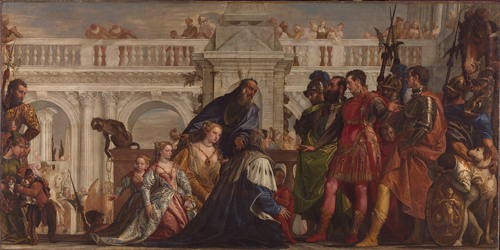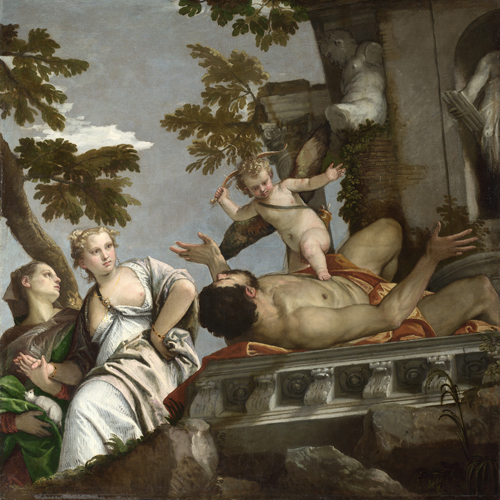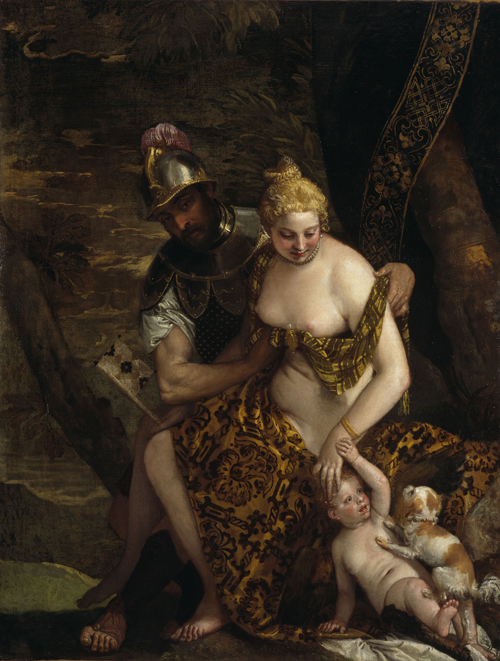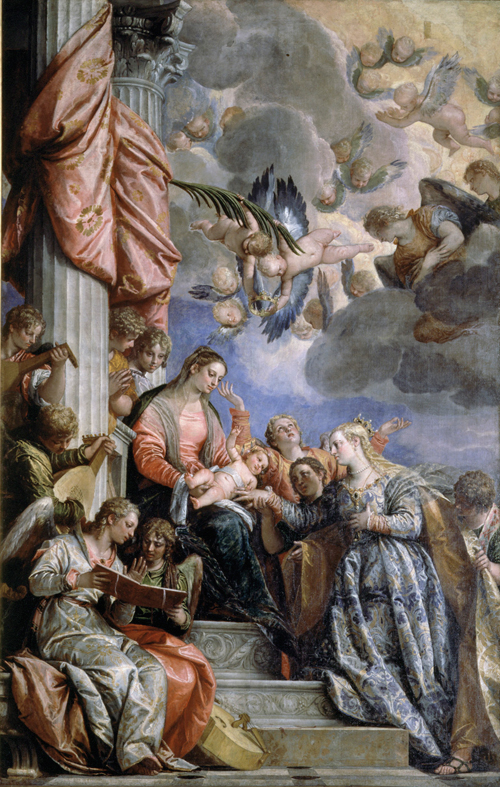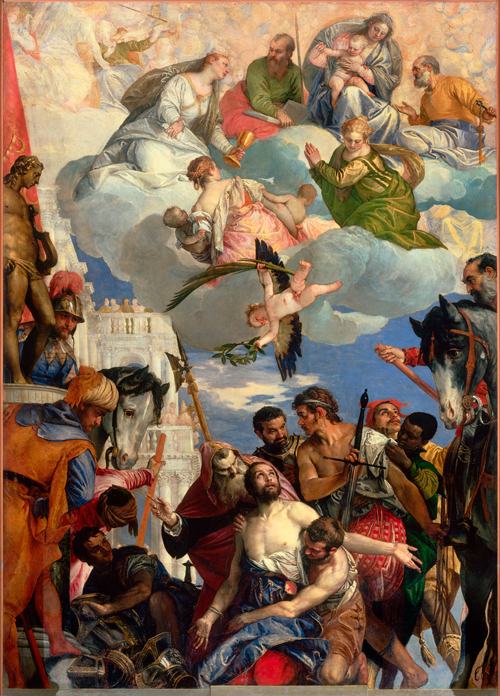

The National Gallery, London
19 March – 15 June 2014
by EMILY SPICER
The son of a stonecutter, Paolo Caliari, known as Veronese (1528-1588), was born in Verona and moved to Venice in the early 1550s. His was, in many ways, an unremarkable life. As curator Xavier Salomon puts it: “He was born, he got married, he died.” And he was happily married at that. Veronese’s life may have lacked drama (apart from a notable brush with the Catholic Inquisition), but his paintings were certainly crammed full of it.
Veronese: Magnificence in Renaissance Venice showcases 50 paintings spanning the artist’s life and is the first monographic exhibition of his oeuvre to take place in the UK. Instead of consigning the Renaissance master to the basement of the Sainsbury Wing, curators have chosen to make space in the main galleries, where the walls are large enough to accommodate the epic scale of the works. Not only this, but there is natural light provided by the glass ceilings, and when the sun disappears behind the clouds, as happens all too often in London, the gallery’s lights automatically adjust, saving the paintings’ vibrant colours from the English gloom.
It is fitting that such attention should be paid to the lighting of this exhibition, as the importance of putting on a good show did not escape Veronese. The artist used “spotlights” in his paintings with all the craft of a theatre director. Take, for example, The Adoration of the Kings (1573). In this version of the scene, a narrow beam of light shines down on the Virgin Mary and the Christ Child from above as if a stagehand has flicked a switch on cue. Veronese also used lighting in a similar, but much subtler, way in his altarpiece The Martyrdom of Saint George. Painted about 1565 and standing over four metres tall, the painting’s journey to this exhibition is the first time it has left the church of San Giorgio since Napoleon took a fancy to it, spiriting it away to France in the late-18th century. In this shimmering masterpiece, the artist treats the characters in the scene like actors positioned on a stage. The protagonist’s pale chest is illuminated from above, his palms turned up in a gesture of submission; this is St George before his execution. A pale, hooded man points towards a statue of Apollo, but the saint dutifully turns skywards to the angelic figure of Faith, who, together with Hope and Charity, help make up the pastel-coloured heavenly chorus.
Like any good director, Veronese can place the viewer in his characters’ shoes. The Family of Darius Before Alexander (1665-67), displayed alongside The Martyrdom of Saint George,depicts the family of the defeated Persian emperor, who mistakes Alexander’s regally dressed friend Hephaestion for the conquering Macedonian. Alexander magnanimously forgives the mistake. Veronese plays on the ambiguity, leaving Alexander’s identity uncertain, although he is probably the dashing man dressed in red. Here, too, is a perfect example of Veronese’s attention to detail, which reflects his adopted city. The classical colonnades behind the group echo Venice’s preoccupation with the architectural language of antiquity, while the sumptuous contemporary clothes of the family point to the city’s status as a centre of fabric imports and exports. Veronese’s brother worked in the textile industry, and the symbolism and significance of contemporary fashions are a recurring theme throughout the artist’s work.
Veronese’s eye for fashion is perhaps most evident in The Mystic Marriage of Saint Catherine (c1565-70). Made for the altar of the church in the convent of Santa Caterina, where aristocratic girls were sent to be educated before they were married, the painting illustrates Saint Catherine’s vision of the Christ Child as he places a ring on her finger. Her cloak is made of woven gold thread; a material reserved for the most important people in life and in art. The saint is being used here as a role model for the future brides of Venice, and dressing her in such finery may have helped earn their respect
Mingled with all the Venetian splendour and pageantry is a quiet tenderness. The men in Veronese’s paintings in particular exhibit a kind of romantic gentility. In The Four Allegories of Love – Scorn (c1570-75), a man lies on his back in a gesture of submission as a tiny cupid chastises him for his advances towards the fair women to his left. Even Mars, the mighty god of war, who appears in several paintings in the last two rooms, is rendered love-struck in every one by Venus.
Veronese was also a talented fresco painter, but, for obvious reasons, that part of his oeuvre has remained in situ and unrepresented here. Fresco painting calls for a speedy hand and would have made the artist adept at working quickly on a large scale. In fact, some of his canvases were so large they could not be transported to London. The Feast in the House of Levi (1573), the painting that caused Veronese to be pulled up in front of the Catholic Inquisition for its portrayal of a raucous drunken crowd at the Last Supper, measures more than five metres high and more than 10 metres wide. The National Gallery would have had to remove the ceiling to accommodate such a work.
With the exception of a few enlarged quotes celebrating Veronese’s work, the text in this exhibition is restricted to titles and dates. When I asked Salomon why this was, he replied that there simply wasn’t room – the canvases took up all available space. Instead, visitors are given a small booklet and, of course, the option of an audio guide. The lack of text, however, is liberating. The studious visitor will often make a beeline for the explanatory labels, but here the paintings are given room to speak first. And you will find yourself wanting to listen.
